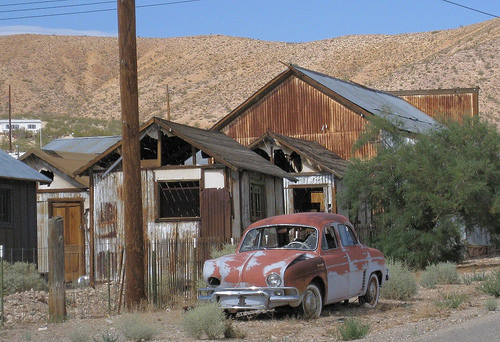

Location: Inyo County, CA Map
Found: 1875
Ghost town of Darwin takes its name from Dr. E. Darwin French who lead an expedition in 1860 in search of legendary Lost Gunsight lode. Although he did not find it, he did discover some silver deposits just west of the Death Valley. A mining site was found that was transferred into a town in 1875. Darwin began to grow after silver and lead discovery in 1874 that led to population increase. Darwin post office opened in 1875. It was briefly closed in 1902 and later remained. The continued to grow when Eichbaum Toll Road opened in 1926. It let to the opening of the Death Valley from the west. When Death Valley became a National Monument in 1933 it was decided to buy the toll road to allow free access to the new park. In 1937 a new rail road branch bypassed Darwin, thus effectively isolating the town. Its population quickly declined.
According to the United States Census Bureau, the CDP has a total area of 3.4 km², without any bodies of water.
The locality was named in reference to Charles Darwin1
or Dr. Darwin French. According to Erwin Gudde, Dr. French, of Fort
Tejon, was there with a party of prospectors from the area in the fall
of 1850. Dr. French led a party of men into Death Valley in 1860 in
order to search for the mythical gold seam of Gunsight Lode in the local
stream, thus giving its name to this stream, the canyon and the future
city.
The discovery of silver and lead at the site led to the
founding of a settlement in 1874. A post office was opened in 1875
(closed for a time in 1902), and is still open today. The city was
thriving when the Eichbaum Turnpike opened in 1926, opening up Death
Valley from the west. When this valley became a national monument in
1933, it was decided to buy the toll road in order to allow free access
to the new park. In 1937, a new shortcut bypassed Darwin, isolating the
locality.
In 2011, the city was the subject of a documentary film
called Darwin. In April 2012, BBC News featured a video of local
residents describing their wish to replace their internet access with a
broadband line.